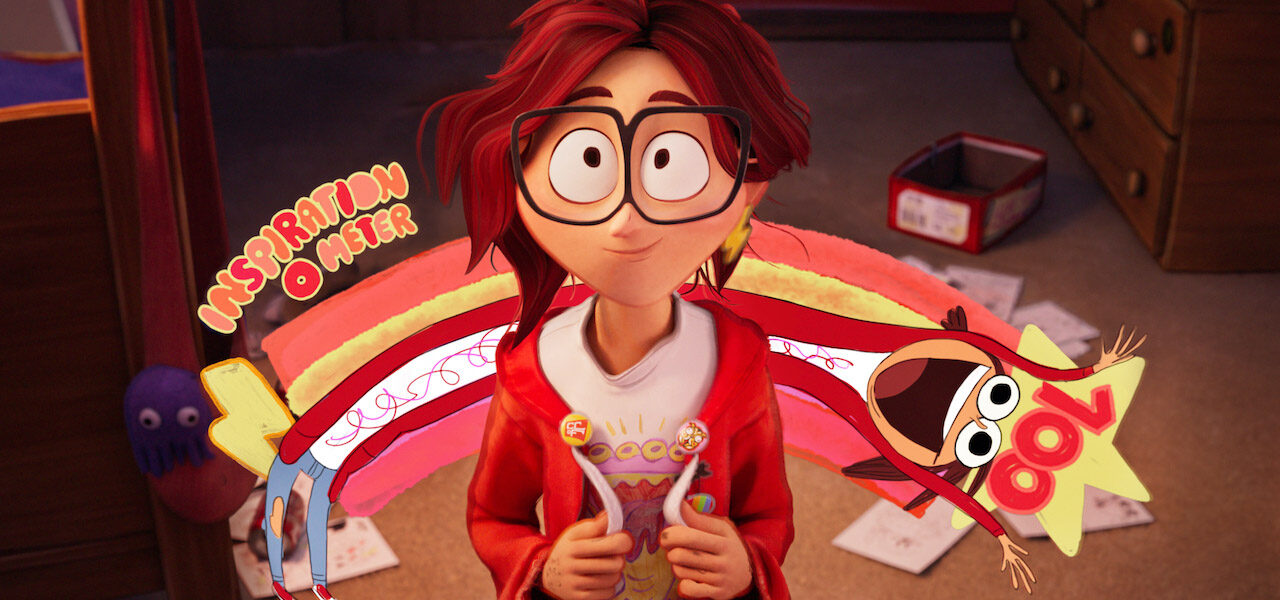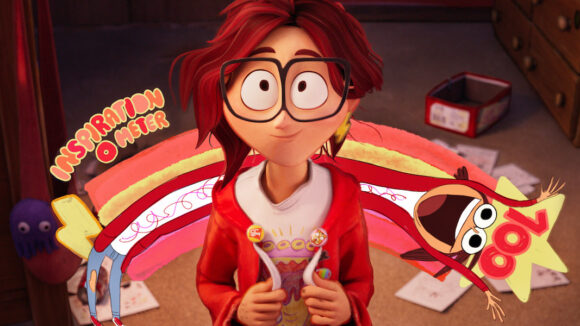

‘Mitchells’ Director Mike Rianda Releases His 2015 Manifesto For Making ‘The Greatest Animated Movie Of All Time’
Mike Rianda, director of awards favorite The Mitchells vs. the Machines, has released a manifesto he wrote early in the development phase, when the film was still known as Control. Alt. Escape!
Written in 2015, the document sets out Rianda’s vision for how the medium of animated movies — in the U.S. especially — could grow. The director has shared it on Twitter, writing, “I remember spending a whole day making this + was too busy and/or embarrassed to pass it out to the team. I talked about this stuff CONSTANTLY to ANYONE who would listen though lol.”
Some of the points relate to the visual and technical approach. One is titled “The movie should push the medium of animation forward?!” Lamenting that “animation can be so self-referential,” Rianda suggests broadening the pool of influences to things like Dogme 95 movies, Studio Ghibli designs, 1960s photography, teenagers’ drawings, “and most importantly real life.”
Cinematography matters here: animation should stop cribbing only from “classical Spielberg-style cinematography” and take inspiration from the camerawork of filmmakers like Martin Scorsese, Hirokazu Kore-eda, and Lukas Moodysson. So do environments: “In so many animated movies, the streets are empty and the homes look unlived-in. No one’s houses really look like that in real life.”
Other manifesto items touch on characterization and story. The characters must be “memorable” and “honest.” Visually and emotionally, “they should be as deep and rich and complicated” as real people. Female characters in particular need to become more varied.
Good comedy is crucial: animated movies are full of supposedly comic moments that “don’t make ANYONE laugh.” At the same time, with the exception of Brad Bird’s works, American animated films often lack drama — the threat of something bad happening. Real stakes are needed: “We should have characters break arms and even have characters die to make the audience actually scared for our main characters.”
Plot dynamics aside, the filmmakers should deliver a clear message. “We can’t just say ‘be yourself’ or something generic,” concludes Rianda. “What is the honest thing that we’ve learned in life that we want to convey to the audience?”
Rianda himself admits that Mitchells fell short of some of these goals, “like having robots kill people on screen. Lol.” But the manifesto’s aims run clearly through the finished film. It was acclaimed for expanding the visual range of Hollywood cg animation in terms of everything from textures to shape language. Our review even noted that the Mitchell home feels “lived-in.”
The film has also been praised for the humor and nuance with which it depicts the Mitchell family. Teenage Katie, the protagonist, has been singled out as an example of how to present a queer character without making the story about their queerness.
Read Rianda’s full manifesto in his tweets below:
I found this wild "Manifesto" I wrote for #TheMitchellsVsTheMachines in 2015.
This is the kind of dumb stuff I wrote because I was TERRIFIED making my first movie.
Some of these we *almost* pulled off? Others we did not- like having robots kill people on screen. Lol. pic.twitter.com/SYVS0pUYJs
— Michael Rianda (@michaelrianda) January 16, 2022
I remember spending a whole day making this + was too busy and/or embarrassed to pass it out to the team.
I talked about this stuff CONSTANTLY to ANYONE who would listen though lol pic.twitter.com/y6tpCXANvO
— Michael Rianda (@michaelrianda) January 16, 2022
Netflix has made a digital copy of the film’s art book available for free (for now) at this link.
